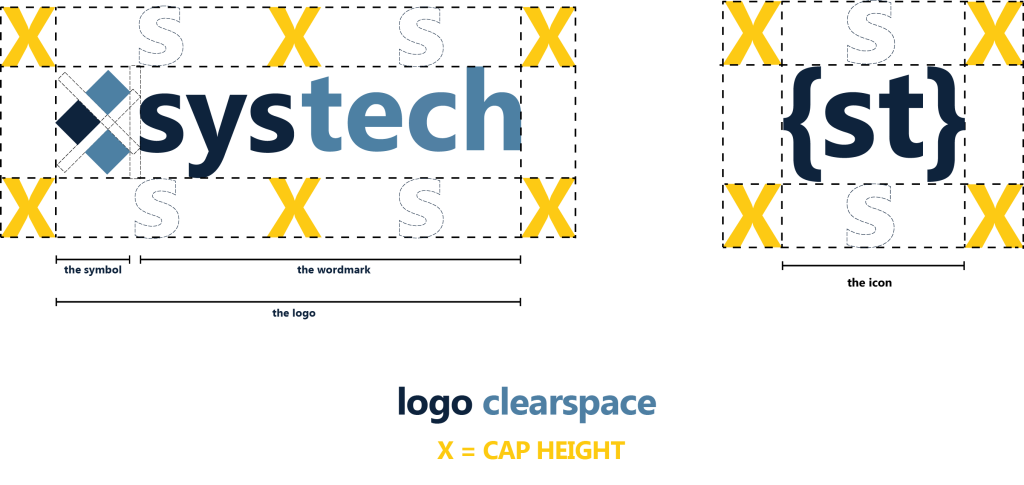In-House vs. Managed IT Services: Making the Right Choice for Your Business
An insightful comparison of in-house IT versus Managed IT Services, highlighting the advantages and disadvantages of each option and providing guidance for businesses to make an informed decision.

Introduction
In today’s business environment, the increasing reliance on technology has made the choice between In-House IT and Managed IT Services (MSPs) a critical decision for businesses. In-House IT refers to internal technology management, offering direct control and customization, while Managed IT Services involve outsourcing IT needs to third-party providers. This article aims to provide an insightful comparison of the two options, highlighting their pros and cons to assist businesses in making informed decisions.
The decision-making process between In-House IT and Managed IT Services is crucial for the success of a business. Companies need to carefully assess their specific IT needs and resources to determine the most suitable approach for their technology management. The advantages of In-House IT include immediate support, deep knowledge of infrastructure, peace of mind, and control over IT needs, while its disadvantages encompass high personnel costs, productivity issues, cost limitations, and reliance on one employee. On the other hand, Managed IT Services provide specialized support, a wide array of services, no extra expenses, and easier replacement, but they also present potential challenges such as longer response times, lack of on-site availability, and limited control over IT infrastructure. Therefore, understanding the nuances of these options is essential for businesses to make well-informed decisions about their IT strategies.
Furthermore, with technology being the backbone of modern businesses, the seamless integration of IT services is a critical factor in driving operational efficiency and success. As such, the article will delve into the specific considerations that businesses need to evaluate when choosing between In-House IT and Managed IT Services, including factors such as business size, budget, and specific IT requirements [2]. It will also explore the potential complementarity of Managed IT Services with In-House IT support and the expertise and support offered by Managed Services Providers (MSPs) compared to In-House IT teams, providing businesses with a comprehensive understanding of their options when it comes to IT management.
The Importance of Choosing Between In-House IT and Managed IT Services
The increasing reliance on technology in today’s business environment has made the decision between in-house IT and Managed IT Services a critical one for businesses. With technology playing a pivotal role in the operations, efficiency, and effectiveness of organizations, the choice between in-house IT and Managed IT Services holds significant implications for the success and growth of a business.
For example, a small business that is rapidly expanding may find it challenging to maintain an in-house IT team due to budget constraints and limited IT requirements. In such a scenario, opting for Managed IT Services can offer cost-effective solutions and access to expertise that align with the business’s growth trajectory. On the other hand, a large enterprise with complex IT infrastructure and specific customization needs may opt for in-house IT to maintain direct control and tailor solutions to their unique requirements.
Therefore, it is crucial for businesses to carefully evaluate their IT needs, budget, and growth projections to make an informed decision between in-house IT and Managed IT Services. This decision-making process can have a profound impact on the organization’s operations, security, scalability, and cost-effectiveness, making it imperative for businesses to understand the implications of their choice.

In-House IT: Pros and Cons
In-house IT services offer businesses the advantage of direct control and customization of their IT infrastructure, enabling tailored solutions to meet specific organizational needs. This level of control allows companies to have immediate support and a deep understanding of their technology environment, fostering a sense of familiarity and confidence in managing their IT systems.
However, one of the significant drawbacks of relying solely on in-house IT is the high personnel costs associated with hiring and maintaining a skilled IT team. For example, the average salary for an IT manager in the United States is around $100,000 per year, not including additional costs such as benefits, training, and equipment. These costs can pose financial challenges for businesses, especially small and medium-sized enterprises with limited budgets. Additionally, productivity issues may arise within an in-house IT team, particularly during times of high demand or when facing complex IT issues that require specialized expertise. This can lead to delays in resolving critical IT issues, affecting overall business operations and efficiency.
Moreover, while in-house IT teams may have a deep knowledge of the organization’s infrastructure, they may also face limitations in expertise and specialization, especially when it comes to emerging technologies and complex IT challenges. This limitation can hinder the ability of in-house teams to provide comprehensive support across various IT domains, potentially leading to gaps in IT service delivery and operational inefficiencies. Therefore, businesses must carefully weigh the advantages of direct control against the potential drawbacks of high costs, productivity issues, and limitations in expertise when considering in-house IT as their primary IT support model.
Managed IT Services: Advantages and Disadvantages
One of the key advantages of Managed IT Services (MSPs) over in-house IT is their cost-effectiveness. MSPs can result in cost savings for businesses due to their ability to provide a wide array of services without incurring extra expenses, such as the costs associated with hiring and maintaining an in-house IT department. For example, a small business with limited IT requirements and budget constraints can benefit significantly from the cost-effectiveness of MSPs, allowing them to access the expertise and technology they need without the financial burden of an internal IT team.
Another advantage of Managed IT Services is the scalability and flexibility they offer to businesses. MSPs can adapt to the changing needs of a business, providing support during big projects or times of high demand. This scalability ensures that businesses have access to the right level of support and resources, aligning with their specific requirements and growth trajectory. For instance, as businesses expand or experience fluctuations in their IT needs, MSPs can seamlessly adjust their services to accommodate these changes, providing a high level of flexibility that may be challenging to achieve with an in-house IT team.
However, businesses considering Managed IT Services should also be aware of potential drawbacks, such as limited personalization and dependence on third-party providers. While MSPs offer specialized support, they may not provide the same level of customization and hands-on control over the IT infrastructure as an in-house IT team. This limited personalization can sometimes lead to challenges in aligning IT services with the unique needs and processes of a business. Additionally, dependence on third-party providers can present communication and collaboration challenges, requiring businesses to carefully assess their integration strategy and ensure seamless interaction between in-house and outsourced IT functions.

Choosing Between In-House IT and Managed IT Services
When it comes to choosing between In-House IT and Managed IT Services, businesses must carefully evaluate their specific needs, resources, and priorities. One of the key factors to consider is the size of the business, as smaller businesses with limited IT requirements and budget constraints may find Managed IT Services to be more cost-effective and efficient. For instance, a small startup with a lean budget and minimal IT needs may benefit from outsourcing its IT functions to a Managed Services Provider (MSP) rather than investing in building an in-house IT team.
Moreover, Managed IT Services can complement in-house IT support by providing specialized services, ranging from proactive support to scalability, and freeing up in-house staff for more strategic tasks. This can be particularly advantageous for businesses that require expertise in specific areas that their in-house teams may not have. For example, a mid-sized company with an in-house IT team may choose to outsource specific IT tasks, such as cloud management or cybersecurity, to an MSP to leverage their specialized knowledge and ensure the seamless operation of their IT infrastructure.
In addition, Managed Services Providers (MSPs) offer a level of expertise and support that can surpass those of in-house IT teams, especially in terms of 24/7 support, access to the latest technology, and the ability to scale services up or down as needed. This expertise and support can provide businesses with a competitive edge in the ever-evolving technological landscape, making Managed IT Services an attractive option for companies looking to optimize their IT operations while managing costs effectively.
Case Studies and Industry Insights
When considering the cost-effectiveness advantages of using Managed IT Services (MSPs) over in-house IT, industry insights and case studies offer valuable perspectives. For example, a case study from a mid-sized company in the healthcare industry found that by transitioning to Managed IT Services, they were able to significantly reduce their IT operational costs. The scalability and flexibility of the MSP’s services allowed the company to adapt to their changing IT needs without the overhead costs associated with maintaining an in-house IT team. This case study illustrates how businesses can benefit from the cost-effectiveness of Managed IT Services, especially when facing budget constraints or fluctuating IT requirements. Moreover, insights from industry experts emphasize that the predictable monthly expenses associated with MSPs can provide businesses with better financial stability and cost management.
In addition, industry insights and case studies shed light on the scalability and flexibility of Managed IT Services. For instance, a case study from a growing e-commerce business showcases how Managed IT Services allowed them to seamlessly scale their IT infrastructure in response to increased customer demand during peak seasons. The flexibility of the MSP’s services enabled the business to quickly adjust their IT resources without the delays or limitations often experienced with in-house IT teams. This example underscores how businesses can leverage Managed IT Services to efficiently adapt to dynamic market conditions and scale their IT operations to support growth opportunities. Furthermore, industry experts emphasize that the scalability of MSPs can provide businesses with the agility and responsiveness needed to stay competitive in today’s rapidly evolving business landscape.
Conclusion
In conclusion, the decision between in-house IT and Managed IT Services (MSPs) is crucial for the success of a business in today’s technology-driven environment. Both options have their unique advantages and disadvantages, and it is important for businesses to carefully evaluate their specific needs before making a decision. When considering cyber security needs, it is imperative for businesses to conduct a thorough assessment to determine the level of protection and expertise required to safeguard their IT infrastructure and data.
Businesses should prioritize their IT infrastructure and resources, taking into account factors such as scalability, flexibility, expertise, and cost-effectiveness. This involves understanding the potential benefits of Managed IT Services, such as access to specialized support, the latest technology, and cost savings, as well as the drawbacks, including limited personalization and dependence on third-party providers. By carefully assessing their IT requirements, businesses can make informed decisions that align with their strategic goals and operational needs, ensuring the effective management of their technology infrastructure.
In today’s rapidly evolving digital landscape, the choice between in-house IT and Managed IT Services is not a one-size-fits-all decision. Therefore, businesses must consider their unique circumstances, industry regulations, and long-term objectives to determine the most suitable approach for their IT needs. Ultimately, by conducting a comprehensive evaluation of their cyber security needs and IT infrastructure, businesses can position themselves for sustainable growth and success in the digital era.

